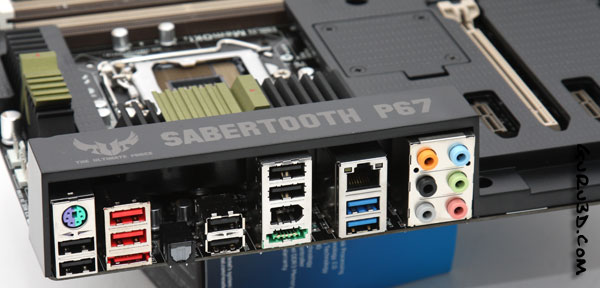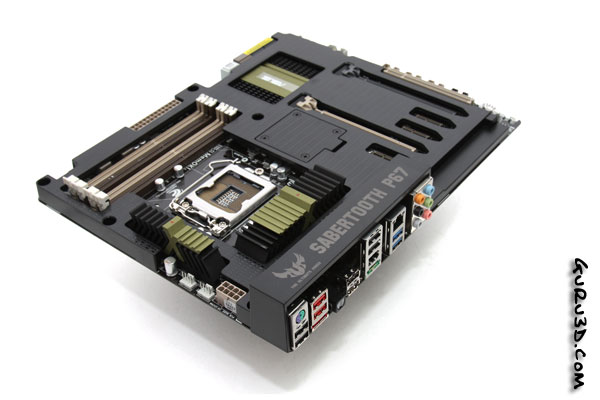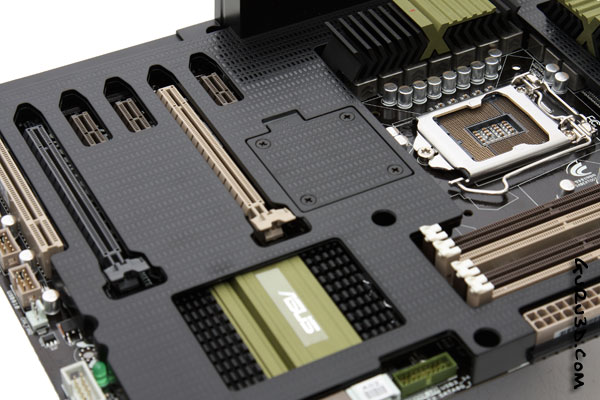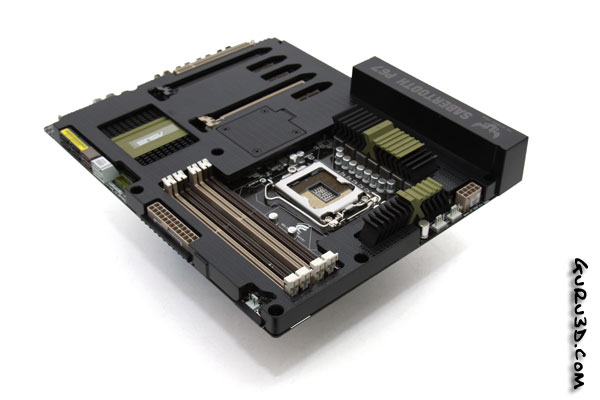Product Gallery

The motherboard has a lot connectivity on the rear IO panel. We spot two NEC based USB 3.0 connectors, next to the eight USB 2.0 ports located at the rear side. We spot an Optical TOSLINK S/PDIF audio for eight-channel audio, PS2 mouse/keyboard connector, two eSATA connectors (red is standard eSATA and green is Power eSATA 3G). Unfortunately we see only one RJ-45 Ethernet jack supporting Gigabit LAN/WAN linked off the Intel chipset and let's see ... ah yes, one FireWire connector.

When we flip the board around 90 degrees we stumble into the processor socket area, LGA1155 we'll take a closer look in a minute. Above you can also see a 8-pin CPU power header conveniently placed at the far side of the edge.
Next to it two FAN headers. The warm parts of the motherboard are cooled by passive heatinks with ceramic coating in the traditional TUF series style.

If we zoom in a little we can spot decent room around socket LGA 1155, though we must say that installing a CPU cooler can be a hard job, as the plastic shield is blocking you a little, the Intel reference cooler for example is just hideous to install that way.
We spot quality capacitors and solid core chokes, marketed under the TUF (The Ultimate Force) series. It's a bit similar to MSI's Military concept and Gigabyte's Ultra Durable design really. It is amazing to see how well component usage/choice changed in the past two years, all for the better of course.

The ATX motherboard power connector is position properly, with above it the four DDR3 DIMM slots. The motherboard can take up-to 32GB of memory clocked at 1866 MHz. Again to the right you can spot another FAN power header.
The square cap in the middle of the motherboard is intended for an active fan. Should your cooling be insufficient for the PCB (certain heatpipe coolers / Liquid Cooling can make that happen), then an optional fan can be purchased and installed. A bit of a pointless feature this way if you ask me.
